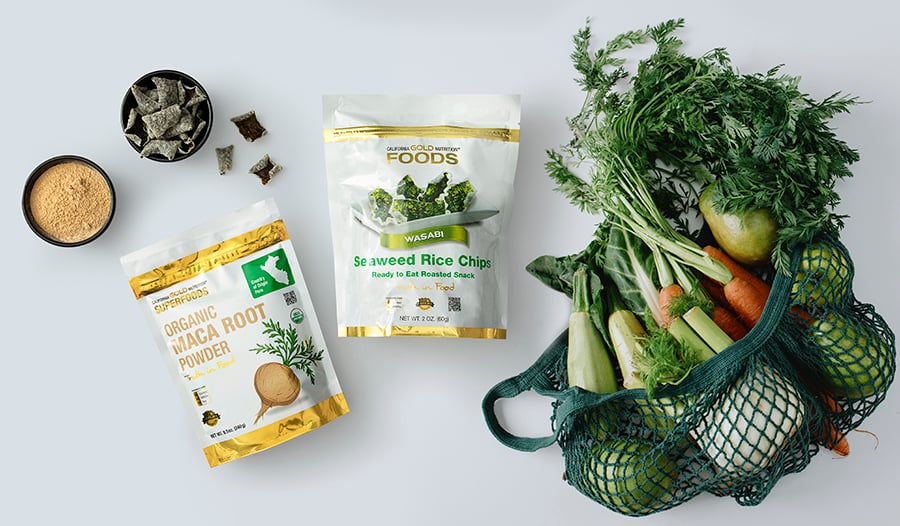A jód előnyei: A fáradtság, a hiány és egyebek megértése

Pajzsmirigyünk felelős a szervezet számos kritikus funkciójáért, és a legfigyelemreméltóbb az energiatermelés és az anyagcsere támogatása. A jód jelentős szerepet játszik a pajzsmirigyhormon termelésében, mint molekuláris szerkezetének kritikus eleme. Ha Ön fáradt, fontos figyelembe venni a jód hiányt, mivel a tartósan alacsony jódszint autoimmun pajzsmirigybetegséghez vezethet.
Jódhiány Tünetei
Ha a jód szint nem optimális, számos indokolatlan tünetet tapasztalhat. A jódhiány és a pajzsmirigy-diszfunkció néhány tünete a következők lehetnek:
- Alacsony hangulat
- Egyre fáradtabb érzés és vágyik alvásra
- Szabálytalan menstruációs ciklusok
- Fejfájás
- Hideg intolerancia
- Vékonyabb haj
- Könnyebb légszomj
- Agyköd
- Székrekedés ízületek
- Merev ízületek és izomfájdalom
Hogyan befolyásolja a jódszint a pajzsmirigy egészségét
A pajzsmirigy egy pillangó alakú mirigy, amely körülveszi a nyaki régióban lévő szélcsövet. Szerepe a pajzsmirigyhormonok előállítása. A pajzsmirigyből két fő pajzsmirigyhormon választódik ki, a levotiroxin (T4) és az L-trijódtironin (T3). A T4 és a T3 gyakorlatilag minden szervrendszer működését befolyásolja.
A T4 a pajzsmirigy inaktív formája, és kizárólag a pajzsmirigyből választódik ki. A pajzsmirigyen kívül a T4 átalakul T3-ra, más néven pajzsmirigy aktív formája. Mindkettő jódot tartalmaz; a „3" és a „4" az egyes pajzsmirigyhormon molekulákban lévő jódmolekulák számát jelenti. Az aktív pajzsmirigyhormon segít optimalizálni az energiát (szabályozni az anyagcserét) azáltal, hogy stimulálja sejtjeinket a vitaminok, fehérjék, szénhidrátok, zsírok, víz és elektrolitokfelhasználására.
Mivel a jód kötelező a pajzsmirigyhormon termeléséhez, a jódhiány alacsonyabb pajzsmirigyfunkcióhoz vezet. A megfelelő pajzsmirigyhormonok előállításához szükséges tartós jódhiány miatt a szervezetnek nagyobb a kockázata az autoimmun pajzsmirigybetegség kialakulásának.
Természetes megközelítések a pajzsmirigy egészségéhez: Olvass tovább.
Kinek van kitéve a jódhiány veszélye?
A jódhiány nem gyakori, de a jódhiány egyre elterjedtebb. Azok, akik egészségesebb tengeri sót választanak az asztali só helyett, nagyobb az alacsony jódkockázat, mivel az asztali sót jódozzák (jódot adnak az összes asztali sóhoz).
Egyéb kockázati tényezők a következők:
- Nyers étrend fogyasztása, amely magas keresztesvirágú zöldségeket tartalmaz, például brokkoli
- Klórozott víz vagy erősen fluortartalmú víz fogyasztása
- Bromidoknak és brómoknak való kitettség
- Többnyire feldolgozott élelmiszerek fogyasztása
- Családi anamnézisében pajzsmirigybetegség volt
Keresztes virágos zöldségek
A keresztesvirágú zöldségek tartalmaznak kéntartalmú zöldségeket, és gyakran felismerik őket a főzési folyamat során megkülönböztető szaguk alapján, például káposzta, karfiol és kelbimbó. A zöldségek egy csoportja, amelyet erőteljes ételnek tekintenek, mert tele vannak csodálatos tápanyagokkal, például B-vitaminokkal, rostokkal és antioxidánsokkal. Az egyik hátránya, hogy az emésztési folyamat során goitrin néven ismert vegyületet hoznak létre, amely zavarhatja a pajzsmirigyhormon szintézisét. Ez csak akkor aggodalomra ad okot, ha rendszeresen nagy mennyiségű nyers keresztesvirágú zöldséget fogyasztanak.
Ivóvíz
Mind a klór, mind a fluorid közvetlenül befolyásolja a jódfelvételt. A klór és a fluorid általában csapvízben és néhány palackozott vízben található. Az alapvető szénvíz kancsószűrő nem távolítja el ezeket az elemeket; azonban, egy fordított ozmózisszűrő eltávolítja ezeket a vegyszereket. A fluorid gyakran megtalálható a fogkrémben, és segít csökkenteni az üregképződést. Ha fluorozott fogkrémet használ, lenyelés előtt feltétlenül öblítse ki a száját.
Bromidok
A brómok és a bromidok olyan vegyi anyagok, amelyek a háztartási termékek széles választékában találhatók. A bromidok vannak jelen néhány égésgátló anyagban, amelyet kanapékon és autóüléseken, szőnyegeken, matracokon és kárpitokon használnak. A brómoknak való kitettség előfordulhat tőzsdén kívüli gyógyszerekben, élelmiszerekben és személyes termékekben, például hajfestékekben. Ügyeljen arra, hogy a háztartási termékek címkéjén ellenőrizze ezeket, mivel köztudott, hogy megzavarják a test endokrin rendszerét, amely felelős hormonjaink termeléséért.
Jodban gazdag élelmiszerek
A jód általában nem bőséges az étrendünkben. Csak néhány kiválasztott élelmiszernek van elég magas jódszintje ahhoz, hogy pozitív hatással legyen az egészségre. A jód táplálékforrásai a következők:
- Tengeri zöldségek, például tengeri moszat és moszat
- Bio, helyi zöldségek, amelyek ásványi anyagokban gazdag talajból származnak, és nemrégiben betakarítottak
- Kagyló és tőkehal
- Maca-gyökér
tengeri moszat
A tengeri zöldségek az egyik leginkább alulhasznosított szuperélelmiszer. Nemcsak az egészséghez szükséges összes ásványi anyagot tartalmazzák, hanem a szárazföldi növények ásványi anyagainak 10-20-szorosát is biztosítják, plusz számos vitamin hozzáadásával. Ez a zöldségcsalád a mikroszkopikus planktontól a több mint 1500 láb hosszú hatalmas moszatnövényekig terjed. Annak ellenére, hogy ez a világ egyik legelterjedtebb zöldségosztálya, a legtöbb ember ritkán eszik őket.
A moszat egy nagy, leveles tengeri moszat, amely a barna algák családjába tartozik, amely a világ óceánjainak hidegebb vizein nő. A moszatot évszázadok óta használják tápláló alapösszetevőként a kínai, japán és koreai konyhákban. Számos egészséges élelmiszerbolt különféle ízletes tengeri moszatterméket kínál, és a sushi tekercsekben gyakran a tengeri moszat közös összetevője.
Halak
A könnyebb halfajták magasabb jódot tartalmaznak, mint a zsírosabb halak, például a lazac. Az Izlandi Élelmiszertartalmi Adatbázis szerint az alacsony zsírtartalmú halak a legnagyobb mennyiségben vannak. Ez magában foglalja a tőkehalat, a laposhal, a foltos foltot és a pollakot.
Helyi zöldségek
A helyben termesztett biozöldségeknek számos egészségügyi előnye van. Peszticideknek való kitettség nélkül több ásványi anyag marad a talajban, és átkerül a növénybe. Ezenkívül a zöldségekben található ásványi anyagok és egyéb tápanyagok közvetlenül a betakarítás után csúcsszinten vannak, és az életkorral csökkennek. A zöldségek beszerzése a helyi ökológiai gazdálkodóktól közvetlenül a betakarítás után jelentősen növeli annak esélyét, hogy magasabb jódtartalmú ételeket kapjon. Ez ellentétben áll az államon kívüli vagy országon kívüli termékek nagy részével, amely 2-3 hetes lehet, és ezért sokkal kevésbé tápanyagsűrű lehet.
Maca
A macát, Peruban őshonos növényt évszázadok óta használják erős immunerősítőként. Gyökére hasonló a retekhez, és porban készül, amelyet italokhoz és turmixokhoz adnak hozzá. A jód esetében is nagy hatással van.
Fontolja meg a jódkiegészítést
Mivel kihívást jelenthet az étrendbe folyamatosan elegendő jód bejuttatása, a jódelégtelenségben szenvedőknek fontolóra kell venniük a kiegészítést. A jód-kiegészítők két fő formában kaphatók, helyi és orális. Mindkettő növeli a jódszintet.
Mivel a bőrön keresztül helyi formában juttatott jód koncentrációja változhat, a helyi adagolás nem egyértelmű. Ha valakinek jódhiánya van, és helyi jódot helyeznek a bőrre, akkor nemcsak nagyobb valószínűséggel szívja fel a jódot, hanem gyorsabban szívja fel a jódot.
A jód orális változata egészséges lehetőség, és könnyebben szabályozható az adagolás. A jódot általában folyadék formájában veszik be, amelyet közvetlenül lehet bevenni vagy italba vagy ételbe helyezni. A hiányos felnőttek pótló dózisa általában 12,5 mg-tól kezdődik, és sokkal magasabb. A jód általában biztonságos, de nem szabad bevenni, ha nincs szükség.
Mindig konzultáljon orvosával
Ha fáradtságot tapasztal, és jódhiány vagy elégtelenség gyanúja merül fel, a következő lépés az, hogy orvosa vizsgálja a pajzsmirigy működését és a jódszintjét. Csak néhány csepp jód-kiegészítés segíthet fenntartani az egészséges energiaszintet.
Referenciák:
- Patrick L. Jód: hiány és terápiás megfontolások. Altern Med Rev. 2008; 13 (2) :116-127.
- Zimmermann MB, Andersson M. A jódhiány előfordulása Európában 2010-ben. Ann Endocrinol (Párizs). 2011; 72 (2) :164-166. doi: 10.1016/j.ando.2011.03.023
- Fenwick GR, Heaney RK, Mullin WJ. Glükozinolátok és bomlástermékeik élelmiszer- és élelmiszernövényekben. Crit Rev Food Sci Nutr. 1983; 18 (2): 123-201.
- Nerhus I, Wik Markhus M, Nilsen BM és mtsai. Hat halfaj jódtartalma, norvég tejtermékek és tyúktojás. Élelmiszer Nutr Res. 2018; 62:10.292 19/fnr.v62.1291. doi: 10.29219/fnr.v62.1291
FELELŐSSÉGKIZÁRÓ NYILATKOZAT:A jelen blognak nem célja diagnózis felállítása...














































































 Tartalomjegyzék
Tartalomjegyzék
















